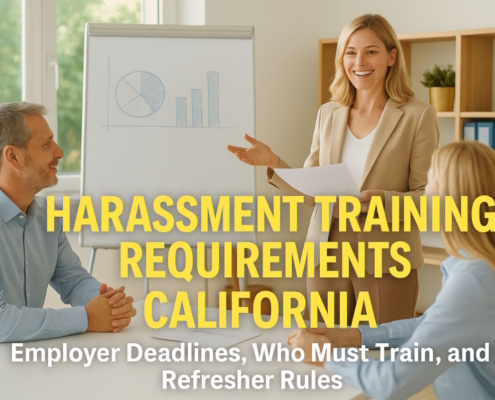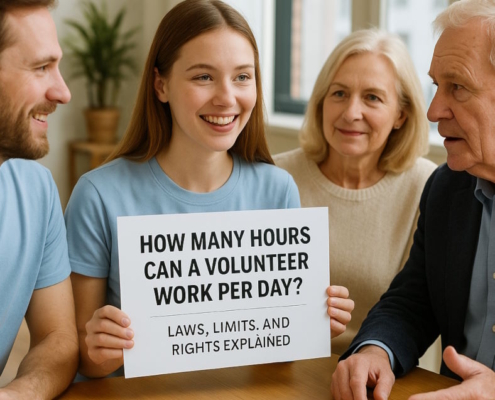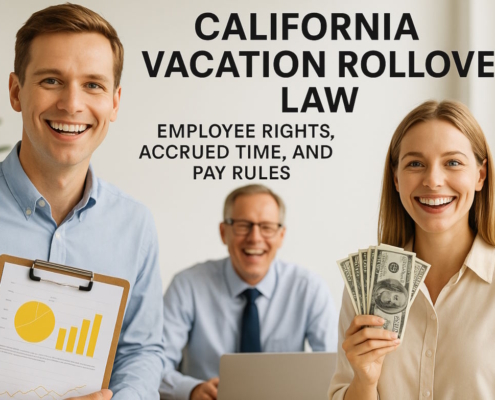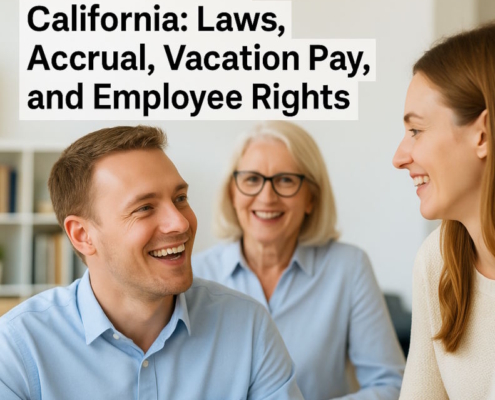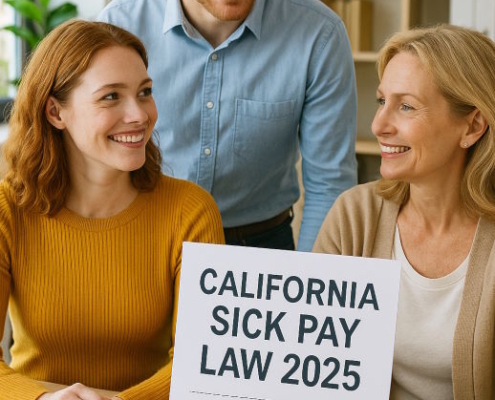Introduction
A class action lawsuit allows multiple individuals with similar complaints to seek justice collectively in the same legal case by having one or more plaintiffs file a lawsuit on behalf of an entire class of individuals who have comparable complaints against the same accused. When it happens to you, you are just one individual fighting a massive company. What would happen if I told you that the playing field might be leveled? A legal mechanism that enables common people to unite and take a strong stance against even the biggest corporations.
Class action lawsuits can be useful in this situation. You may learn more about how these lawsuits proceed from beginning to end by reading this post in greater detail. Lead plaintiffs, prospective classes, and the essential part that attorneys play in ensuring your voice is heard will all be covered. We’ll look at a variety of class action lawsuits, including those involving data breaches and personal damage.
Comprehending Class Action Lawsuits
Several plaintiffs can band together and take the same accused to court in a California class action lawsuit. A group of individuals may file an ensemble lawsuit against a single defendant if one or more of them claim to have suffered harm as a result of illegal activity.
1. The Way a California Class Action Lawsuit Operates
When one or more people (referred to as class representatives) bring a lawsuit on behalf of a greater number of others who have experienced comparable harm as a result of a single defendant’s acts, a California class action lawsuit is initiated. Before the lawsuit can move on as a class action that is going to tie every participant to the outcome, the court has to first verify that the case satisfies certain requirements, which include having enough affected parties, shared legal problems, and sufficient representation.
2. The Fundamental Framework
- Class Representatives (Lead Plaintiffs): They bring the case & speak for the group as a whole. They are lead plaintiffs or class representatives.
- Members of the class: Everyone with comparable allegations against the person being sued (whether or not they actively engage).
- Typical Legal Issues: The case must involve common legal issues or facts that have an equal impact on every member of the class.
3. Key Conditions for the Status of Class Action
- The class has to be so large that it would not be feasible to connect each member individually.
- Every member in the class must have questions about the same facts or laws.
- The representatives’ assertions must be characteristic of the class.
- The representatives are required to adequately and effectively defend the class’s interests.
4. Class Actions’ Binding Character
Judgments or settlements resulting from these proceedings may bind all prospective classes, even individuals who have no knowledge of the lawsuit.
What This Actually Means:
- Individuals who meet the requirements of the class are included by default unless they expressly choose not to.
- Binding Results: A California class action lawsuit can be successful or unsuccessful. All members of the class are obligated by the result.
- Notification Requirements: Class members may choose whether they want to take part or not. Courts usually demand that they be informed about the case.
- Preclusion Effect: Following the resolution of the class action, members of the class are typically prohibited from bringing independent cases for the same claims.
5. Lead Plaintiffs’ and Potential Classes’ Roles
The lead plaintiff in a California class action lawsuit represents not just themselves but also other people who are similarly impacted. This group is called “class.” It is their duty to ensure that everyone’s interests are fairly represented in court.
This does not need everyone in the class to participate actively; rather, it enables a number of people who have similar concerns or questions about a behavior, product, or service to take on big businesses in a single, coordinated lawsuit.
There are cases when an employee is being victimized in a similar manner to others. Seek assistance if you believe you might wish to file a California class action lawsuit.
Examples of Class Action Lawsuits
Cases that are frequently addressed as class actions include:
- Many consumers are impacted by consumer fraud or accusations of defective products.
- Securities fraud affecting a company’s shareholders
- Discrimination in the workplace or wage infractions that impact several employees
- Natural catastrophes that affect entire towns
- Data breaches that impact a large number of clients
By addressing numerous comparable issues in a single process, this collective approach increases the efficiency of the court system while enabling those with smaller grievances to access justice.
Proceedings of a Class Action Lawsuit
Class action lawsuits are complicated. You must take time to grasp the stages involved. They begin with a person or group. They are the lead plaintiffs who feel they have been harmed by unlawful business conduct. How does the federal justice system handle this lawsuit?
Filing & Certifying a Case
A class-action lawsuit begins when the plaintiffs employ a law firm that specializes in these kinds of matters. The attorneys identify possible class members. Those who suffered comparable harm created the complaint. Outlining of the alleged violations is done.
For any class action lawsuit to proceed, certification is essential. According to the Federal Rules of Civil Procedure, certain conclusions must be verified for them to be certified, such as the impossibility of joining every participant and common legal or factual issues (General Telephone Company v. Falcon).
The law firm can file a certified class-action lawsuit if these conditions are met.
Rulings from higher courts (the Supreme Court) have an impact on how class actions will develop. Our legal system is extremely interwoven. A specialist firm in this area can confidently handle this subject.
- Law firms play an important part in this process. They act as both a guide and a guardian.
- Federal courts are where significant disputes over the interpretation of rules and the implementation of standards take place; therefore, navigating them requires skill.
- Supreme Court decisions have the unquestionable authority to influence ongoing lawsuits.
Class Action Lawsuit Types
There are numerous types of class action lawsuits, each with distinct features and legal implications. Lawsuits related to defective products, illicit corporate operations, and personal harm class actions are a few prevalent forms.
Class actions for personal injuries arise from situations in which a single incident or product caused harm to several people. A hazardous drug that affects patients nationwide or a dangerous workplace that causes health problems for workers.
Let’s move on to cases associated with defective products. They occur when consumers suffer harm from defective products. This may include everything from toys with components that could choke kids to broken electronics that start fires.
Illegal business practices are the focus of the third category. In this case, companies may be exposed for using unfair pricing tactics or misleading advertising techniques that negatively impact a significant number of consumers.
Class action lawsuits include a wide range of issues. They may include consumer protection claims involving violations of privacy or data breaches. Employment-related complaints, including theft of wages or discrimination, come under this. Class action lawsuits also involve securities fraud and misleading investors.
Get professional help as soon as possible if you’re in a similar situation & believe your rights have been infringed. Investigate your choices without holding back.
Class Action Lawsuits: Advantages and Difficulties
There are various advantages to class action litigation. They allow a big group of people who have experienced similar harm to band together and file a lawsuit against a common defendant. This is particularly useful when separate lawsuits are not feasible due to tiny individual damages.
By resolving issues that impact all members of the class in a single lawsuit, these actions also expedite the litigation process. Businesses may be forced to alter their unlawful activities as a result of the substantial damages awarded.
A lawyer’s description of how these lawsuits guarantee equitable distribution among claimants and hold large firms accountable for misconduct is an excellent illustration of this benefit. Class action cases do present certain difficulties, though. Gathering a possible class and guaranteeing the rights of missing parties are protected can be challenging. Due to a lack of finances or legal understanding, some people may also find it difficult to decide whether to participate in a lawsuit or to get notice.
Meeting federal requirements, such as proving commonality of facts or law among claims and guaranteeing that the representing parties would adequately protect interests, is another difficulty in certifying the complaint.
Additionally, hiring reliable expert witnesses becomes essential in these situations since, depending on the weight of their testimony in court, they could make the difference in your case.
- Verifying that every claimant has experienced harm,
- Providing evidence of how business activities caused harm,
- Demonstrating the appropriateness of suggested remedies—everything is largely dependent on professionals.
Important Things to Think About in Class Action Lawsuits
There are a number of things to consider, such as ethical and legal obligations.
1. Expert witnesses’ function in court
Expert witness testimony offers in-depth explanations of complicated topics. These experts essentially give your case greater weight since they show that a reasonable attempt was made to demonstrate facts that are shared by all of the plaintiffs. Their involvement may tip the scales in either direction. This is more so when obtaining compensation for injuries caused by unlawful business operations or faulty products.
2. Assessing Whether Legal Action Is Appropriate
Potential classes and the lead plaintiff or plaintiffs are two important factors to take into account when starting a class action case. As a spokesperson for all those impacted by the defendant’s actions, the main plaintiff frequently encountered harm; their commitment may either make or break this campaign.
Potential classes include those who have experienced comparable injustices, but not all big numbers are eligible for this. In order for courts to declare them as one collective organization eligible enough according to the federal laws of civil procedure requirements established by Supreme Court rulings like General Telephone Company v. Falcon, it is crucial that decisions affect everyone equally.
Effective Class Action Lawsuit Examples
Legal precedents & corporate practices have been significantly impacted by class action lawsuits.
Examples:
The banking behemoth was compelled to pay $3 billion for allegedly fabricating accounts as a result of the embarrassing Wells Fargo event. Improved protections for consumers were the outcome of this litigation, which exposed unethical company practices.
Customers united in another historic lawsuit against Volkswagen after learning that their cars were spewing pollutants in excess of what was permitted. Volkswagen was forced to shell out $14.7 billion, which is among the biggest car settlements ever.
As seen in the litigation against Yahoo, a class-action claim can also address data breaches. Yahoo reached an extraordinary $117.5 million settlement after neglecting to protect user information, which resulted in major data breaches between 2013 & 2016.
In closing, the historic asbestos lawsuit involving businesses like Johns Manville, which resulted in settlements of over $100 billion, demonstrates how personal damage class actions may offer justice for individuals experiencing long-term health problems as a result of corporate carelessness.
Consequences of Winning Class Action Lawsuits
These examples show the way class action lawsuits may bring about significant change. More significantly, they frequently lead to changes in regulations and laws to stop future harm, in addition to producing large awards. These collective lawsuits essentially serve to hold big businesses responsible for their operations, including data security and product safety. They serve as evidence that victory is possible when people band together to oppose the illegal actions of large corporations.
Although class action suits may appear complicated at first, they have an essential role in leveling the playing field for all parties interested in an arbitration against big businesses or common defendants. Thus, the next time you read about one in the news, or get an invitation to join one. You now understand how it operates.
FAQs
1. Class action lawsuit: What does it mean?
Many people with comparable legal issues may file a class action case collectively. A handful of “lead plaintiffs” typically take the lead in it.
2. Do class action lawsuits work well?
For those who might lack the means to fight on their own, collective actions can be beneficial. However, because of shared damages, they can result in smaller settlements per individual.
3. Who receives the most money after winning a class action case?
The lead plaintiff and attorneys typically receive more from payouts. It all depends on the particulars of each case and the regulations governing settlement distribution.
4. What dangers come with taking part in a class action lawsuit?
Risks involve:
- Giving up personal control over the matter,
- Potentially getting paid less, and
- Having to abide by the court’s ruling if you don’t agree with it
5. Do class actions make sense?
Class actions can be beneficial because they give access to the law for grievances that might be too minor to pursue individually. It is for workers who have experienced comparable workplace infractions. Members can share legal expenses among the group, and it may lead to significant compensation & policy changes.
6. What is the amount of money awarded?
It is subject to the total settlement sum and the number of class members. Awards can range from as little as $10 to $100 per individual in small client cases to hundreds of thousands of dollars in large cases involving substantial harm.





